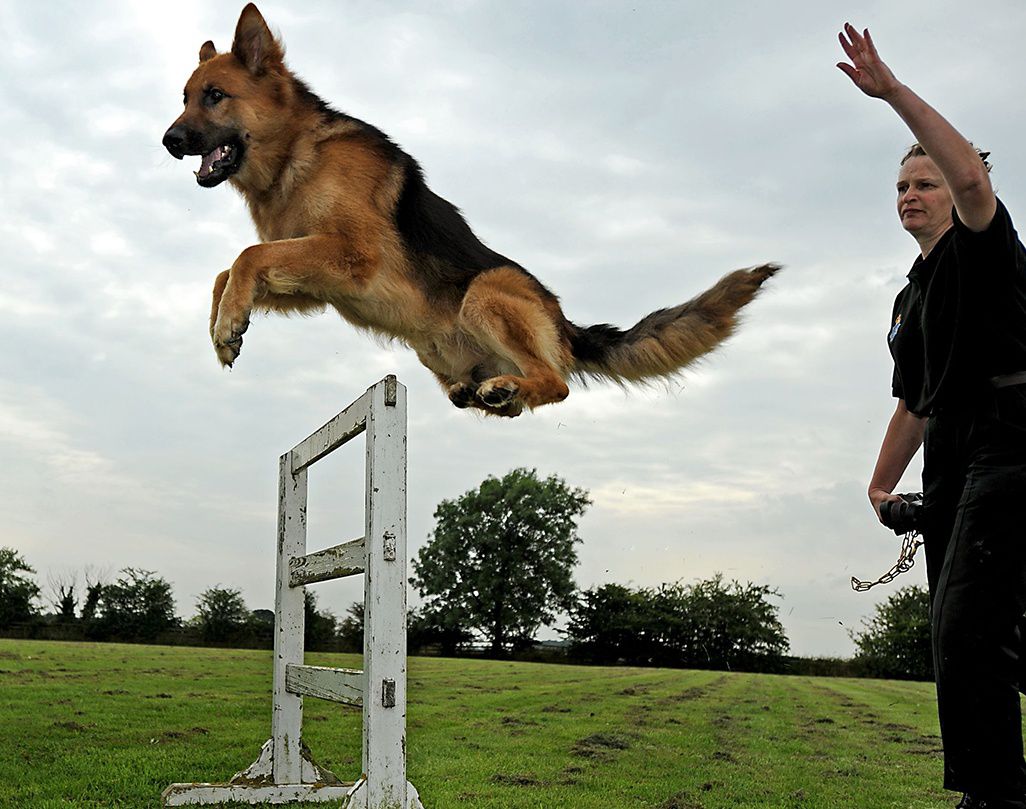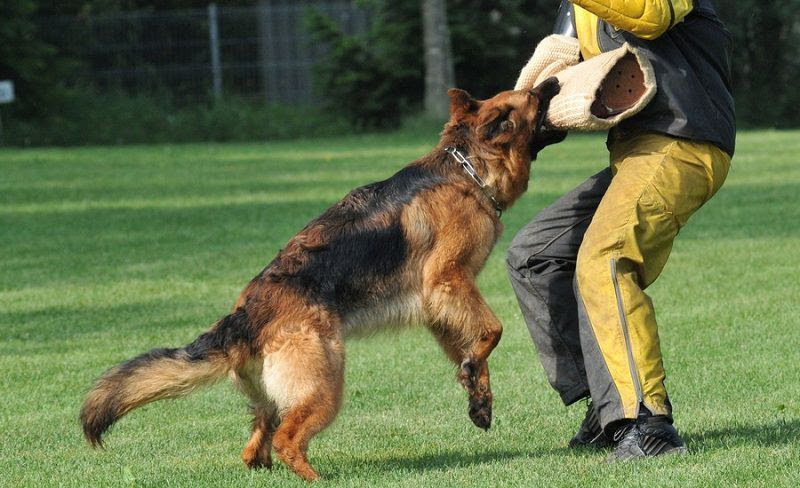Taking care of German Shepherds is simple. With their short and clean coat, they do not require much washing or grooming. Once bath every 3 months is enough. However, for GSDs that frequently exercise and roll on the ground, regular bath is necessary to avoid fungus and scabies. If your time allows, you can brush their teeth once a week to prevent dental diseases and keep their breath fresh.

Best Gifts for German Shepherd Lovers
[ux_products products=”24″ tags=”german-shepherd-products” orderby=”rand”]German Shepherd training & exercises
Choosing the right exercises and training method for GSDs is a great concern of GSDs’ owners. A standard and beautiful German Shepherd must have a toned body with strong muscles, which can only be achieved through exercises. The following exercises are suitable for German Shepherds over 4 months old:
- Pulling tires or weights. Motorbike tires can be used. For a more intense workout, increase the weight by adding a few more bricks and have them pull on the grass. As this exercise is quite tough, let them practice only 3 times per week and 30 minutes per time. This exercise helps strengthen the muscles of their calves, hips and shoulders.
- High jump. Place a piece of food on the top of a stick and then lift it up as high as possible to lure them. This workout helps build hip and hind muscles.
- Biting and pulling tires. Have your German Shepherd bite into a tire and pull to one direction, while you pull to the opposite direction. This helps strengthen jaw, neck and shoulder muscles.
- Steady run, stick and ball catching. These exercises are both entertaining and good at developing their flexibility.
For an optimal muscular development, these exercises need to be combined with a protein-rich diet.

Advanced training such as sitting or standing with two legs, jumping, hurdling, attacking or protecting requires special equipment and protective gear. Professional dog owners often bring their dogs to dog farms for such professional training.
>> You May Also Like:
- German Shepherd temperament & characteristics. GSD history & origin
- German Shepherd price range. Where to buy German Shepherd puppies?
- Best German Shepherd diet & food list
